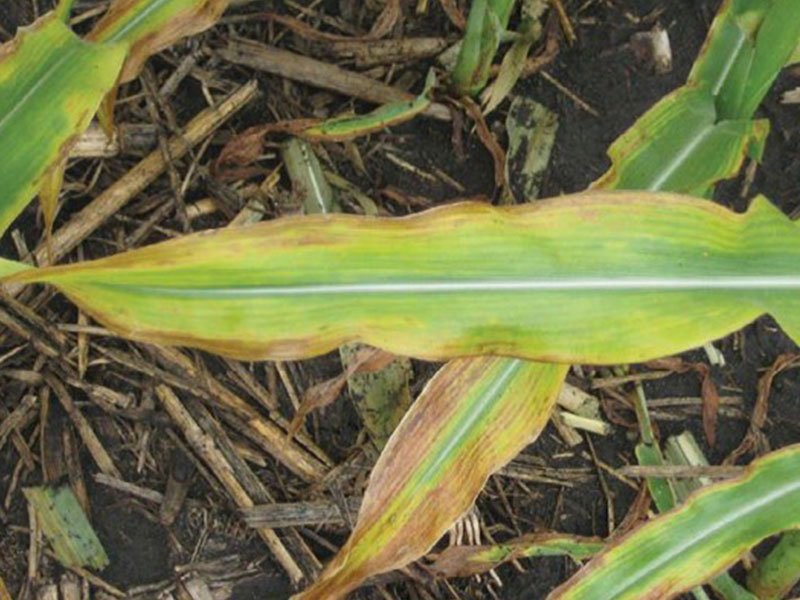Don't overlook potassium required in forage crop programs
Back Potassium is critical for forage crops in order to achieve high yields and quality that maximizes animal performance and profitability.
Potassium is critical for forage crops in order to achieve high yields and quality that maximizes animal performance and profitability.
Soil potassium levels have also been influenced by a transition to more forage crops on dairy farms, particularly high yielding corn silage crops.
Higher yields result in higher K removal rates from the field. Growers and advisors need to keep K fertility in mind when developing programs for high yielding corn silage.
Role of K in corn plant growth
Corn requires potassium for proper growth and development. Potassium plays an indirect role by acting as a catalyst regulating enzymatic processes in the plant. Photosynthesis, cell division, carbohydrate production, protein synthesis, root development, and tolerance to temperature extremes are all influenced by K.
Potassium can also improve the crop’s tolerance to drought by regulating water use and can minimize susceptibility to disease.
In corn, potassium deficiency can shorten the duration of leaf photosynthesis during the season and reduce the transport of nutrients and sugars within the stem. As a result, plant integrity is compromised, starch formation is hindered, and use of N is limited. Lodging of corn or small grains is often related to low K levels through reduced stalk strength and higher incidence of stalk disease.
The real value of potassium to crop plants is most evident in times of stress. Adequate and balanced nutrition maintains a plant’s vigor and reduces its vulnerability to stress. When in proper balance with nitrogen, phosphorus, sulfur and other micronutrients, sufficient potassium ensures high yields of quality forage.
Soil availability of Potassium
There are three types of potassium found in the soil. The first is found in soil minerals. This type of potassium makes up more than 90 to 98 per cent of soil potassium. It is tightly bound, and most is unavailable for plant uptake. The second is non-exchangeable potassium.
Non-exchangeable potassium acts as a reserve to replenish potassium taken up or lost from the soil solution.
It makes up approximately 1 to 10 per cent of the soil potassium. The last type is the exchangeable or plant available potassium at one to two percent. It is found either in the soil solution or as part of the cation exchange.
Soil type and environmental conditions have an effect on the amount of potassium available for plant use. Potassium availability is highest under warm, moist conditions in soils that are well-aerated with a pH that is neutral or slightly acidic. Too much water in the soil profile lowers oxygen levels, which in turn decreases plant respiration, reducing potassium uptake.
In clay soils, potassium availability can be affected due to its competition with calcium and magnesium for sites on the cation exchange. Both calcium and magnesium can easily displace potassium from the cation exchange.
Crop removal of Potassium
Crops such as corn silage and lucerne both remove a tremendous amount of potassium from the soil profile. A corn crop takes up nearly as much potassium as it does nitrogen, yet management of each nutrient is entirely different.
Potassium removal for Corn grain and silage
|
Crop |
K removed / tonne DM |
Average Yield |
K removed per hectare |
|
Corn Grain |
4.0 |
12 t/ha |
48 |
|
Corn Silage |
10 |
22 DM t/ha |
220 |
Source: Growth Potential, Corn Growers’ Guide
Managing Potassium for Corn Silage
Corn plants take up nearly as much potassium as nitrogen, yet each nutrient is managed differently. Managing potassium is relatively simple because of the reaction of K in the soil.
Potassium fertility management requires a long-term commitment to maintaining optimum soil test levels. In addition, growers need to assess the removal rates of this nutrient in the harvested crop. Corn silage will remove the highest amount of K since it accumulates in the vegetative material of a growing plant.
Nutrient uptake mirrors plant growth. The highest demand period for K is during the grand growth phase of corn from V6 through silking. Therefore, having high available K at this time is critical to ensuring successful plant development and growth.
Most growers will apply potassium ahead of planting. This is often supplemented with starter fertiliser applications in the seed zone made during planting. No matter which plant parts are harvested from the field, the growing corn plant will have the same potassium needs.
The big difference is in replacement of nutrients removed; corn silage fields may take five to six times more potassium than fields where only the grain was removed.
Taking it to the Field
- Test: Soil test your fields regularly to track K levels, especially after lucerne and corn silage crops
- Calculate: Measure or estimate annual crop removal of potassium. Account for manure and other fertilizer sources applied to the field
- Plan: Make a plan to replace potassium based on removal rates, manure use and soil test level
- Corn: Apply needed potassium prior to planting and work
CN0623-07A
Your seed is backed by
local experience
With dedicated and highly skilled team members located throughout Australia you can be sure of accessing the best local knowledge to help you maximise your investment in Pioneer® brand hybrid seed. Get in touch with your local Territory Sales Manager or Farm Services Consultant today.
